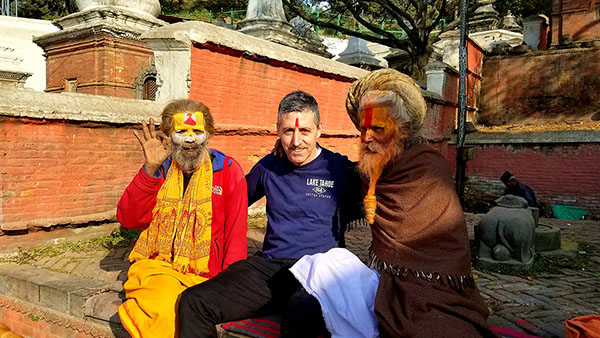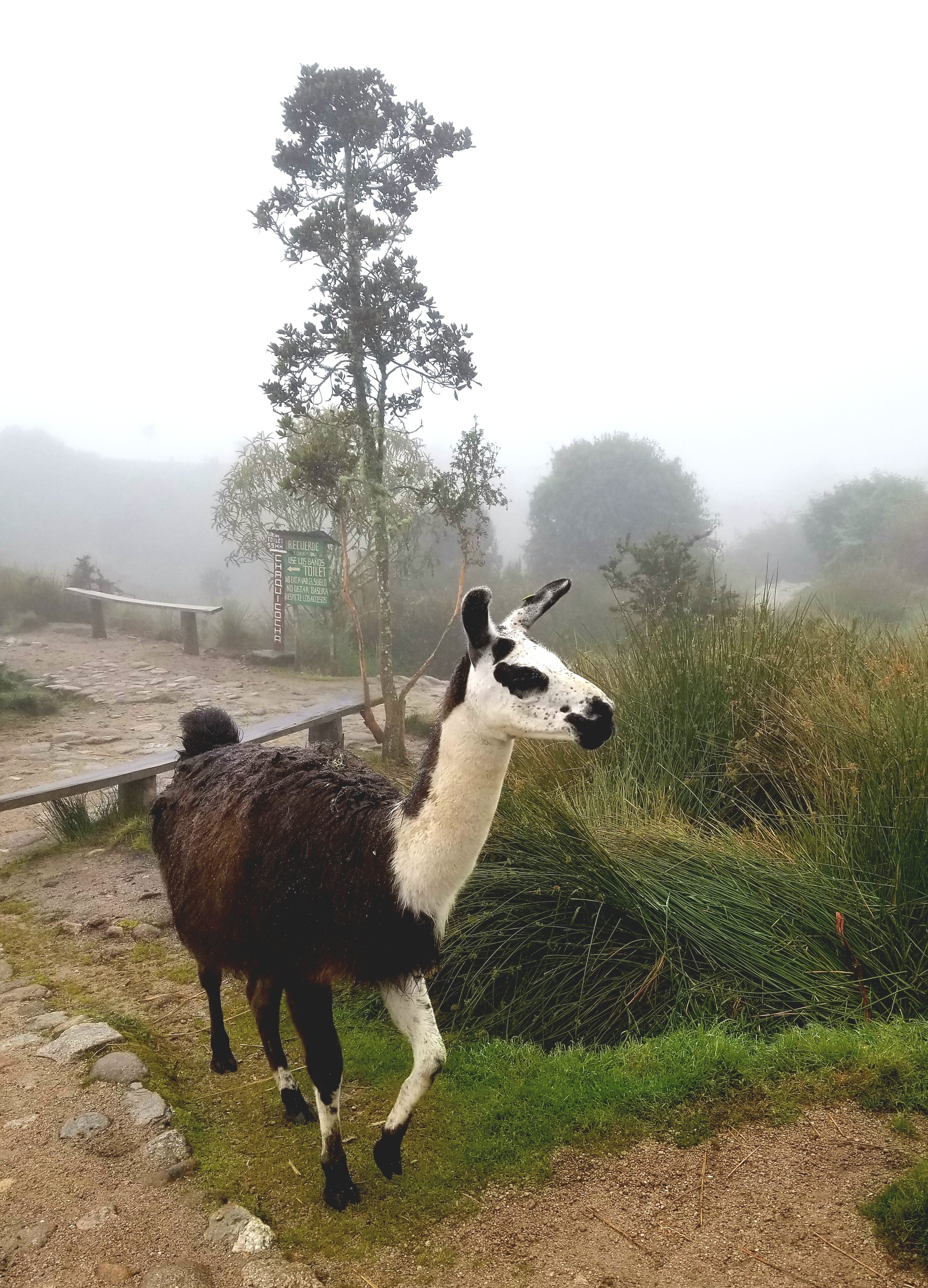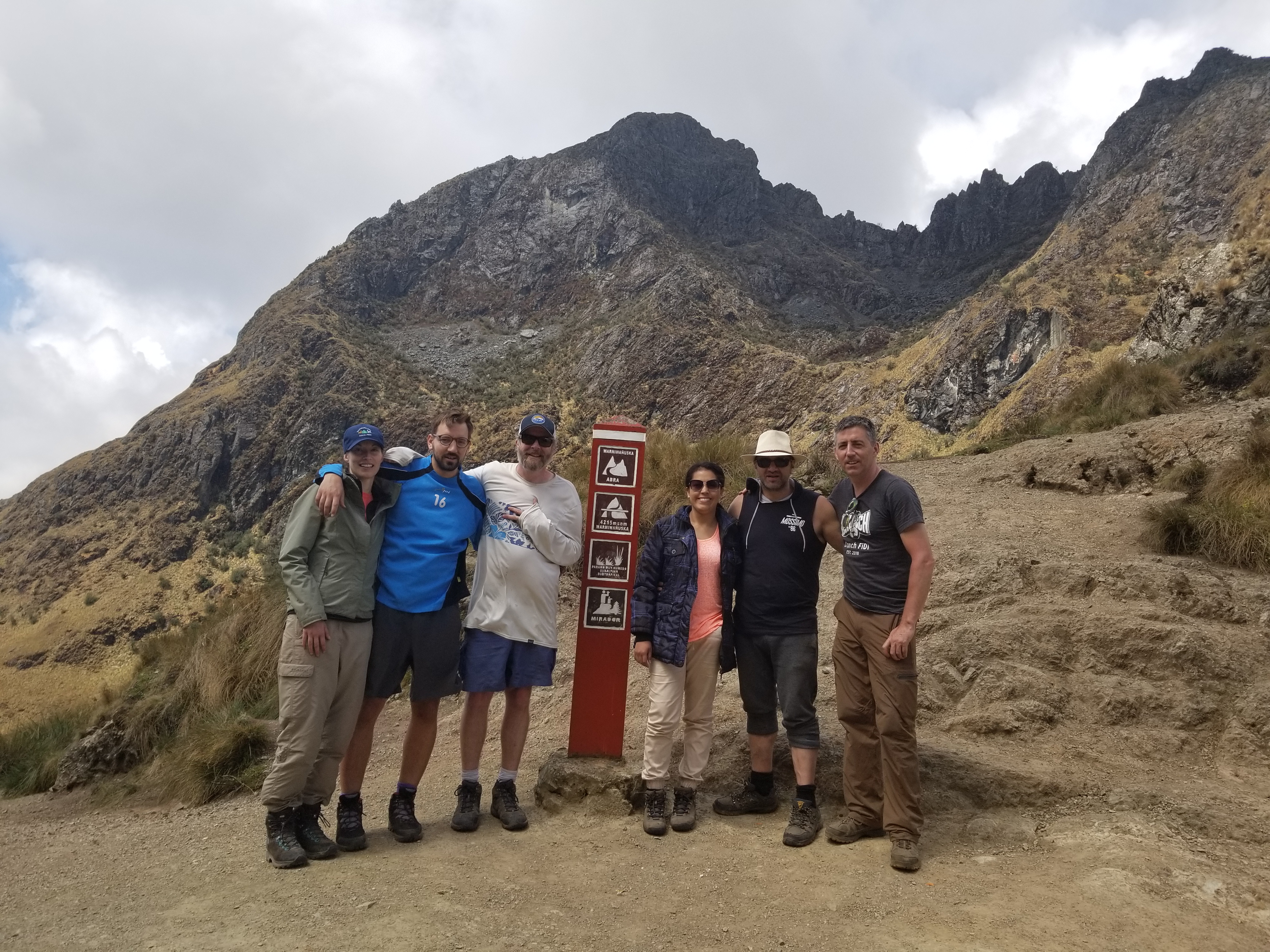There has been a belief, held by many civilizations through the eons, in the spiritual significance of high places. Those words were from my good friend Carl Campbell, upon hearing of my plans to hike Nepal’s Annapurna Circuit. Once I arrived in Kathmandu, I realized how right he was.
I had already encountered this essence of spirituality at high altitude, having cycled over the Rockies at Monarch Pass, and hiked the Inca Trail to Machu Picchu in Peru. But my visit to Kathmandu and Nepal brought the indeterminate theory to a whole other level.
Before heading eastwards, I had briefly flirted with the idea of hiking the Pacific Crest Trail, made famous by Cheryl Strayed’s book Wild, or the Snowman Trek through Bhutan, but both require a significant time commitment. More pertinently, neither trail appealed to me in a spiritual sense, so for a time I was in a state of trekking limbo. Then, quite by chance, I stumbled upon a travel memoir by a Canadian man called Andrew Stevenson, who flew to Kathmandu and hiked the Annapurna Circuit back in the early 1990’s. The more I read, the more fascinated I became with the Annapurna region of Nepal. The mountains had finally called to me, and I had to go. So, on a cold and overcast first day of December, I left New York City on a Qatar Airways flight out of JFK, heading to a far off land, with expectations of a tough adventure challenge, and the opportunity to further explore mindfulness and meditation for personal development and peak performance.
The twelve and a half hour flight to Doha afforded ample opportunity to read about, and mentally prepare for what would be an epic trek. After a brief layover in Qatar, I was in the air again for the final leg of the long journey to Nepal. For most New Yorkers, travel represents an opportunity to escape the congestion and intensity of living in one of the world’s busiest cities. It was therefore something of a disappointment to discover that Kathmandu is even more chaotic, and certainly a lot smoggier, than the Big Apple.
All manner of decrepit, smoke-belching vehicles, jostle for position on narrow dusty streets which are shared with motorcyclists, pedestrians, cyclists, and scores of cows, goats, chickens and dogs. Truth be told, given the hectic street life in the city, I was counting down the hours until I could escape Nepal’s capital for the high ledges and trails of the Annapurna Circuit. But one spot of sightseeing unexpectedly changed my experience and perception of Kathmandu.
On a single afternoon, I visited all of the noteworthy temples, stupas and spiritually significant sites that the city has to offer. The ‘Monkey Temple’, Boudhanath Stupa and Durbar Square at what was once the royal palace of the Kingdom of Nepal, were all interesting. Then, I arrived somewhat blindly at Pashupatinath Temple. It was simply another stop on the tourist trail to me; a way of passing the time before my trek could begin. But once I had paid my admission and entered the large site, I quickly realized that I had stumbled upon a very interesting place.
Unsure of where to begin to explore the site, I approached a long wall, rested my arms on it, and peered over to survey the surroundings. On the other side of the wall, a terrace of concrete steps ran down to Bagmati River which the entire temple complex straddles for a stretch of about four hundred meters. But my view was still slightly obscured, by what I thought was yet more of Kathmandu’s infamous smog. On closer examination, I discovered that the haze was in fact smoke.
A concrete plinth in the foreground, supported a neatly stacked pile of bamboo and kindling, which was burning slowly but surely, while being stoked periodically by an attendant. At the center of the fire, I could see a solid object, and when my eyes had focused sufficiently, I discovered that what I was looking at was a head. A human head! It transpired that I was no more than ten feet away from where a cremation was taking place.

“This particular man went to work this morning”, a guide told me. “He died suddenly, and by two o’clock his body was brought here, to be cleansed and cremated. By six o’clock, he will be in ashes, which will then be swept into the river.”
This very public funeral pyre, sitting aside the sacred Bagmati River, which in turn flows into the even more sacred Ganges, serves as a poignant reminder of the often close relationship between life and death in Nepal. In total there were perhaps six or seven pyres in a line along the river; those further upstream reserved for the upper echelons of society. Hindus believe that the river’s origin is in the footsteps of Lord Shiva, high above Kathmandu in the Himalayas, therefore anywhere upstream is more sacred.

To see a body burned in full public gaze, while locals and visitors shuffle through the temple complex taking pictures, is perhaps a shock to westerners. It certainly was to me initially. But it perfectly represents how Hindus and Buddhists view life and death, and the relationship between them.
I later asked my guide if he would be cremated in this public manner at Pashupatinath, and if he was happy about this arrangement. “Yes. And we absolutely need to see and accept the cremation – and the creation. Without death, there can be no life.”
And therein lies the key as to why Hindu’s in particular seem to have a higher acceptance of death. Their belief in reincarnation is such, that the burning of the human body is simply the destruction of the physical vessel that the soul has last occupied. A death is merely seen as the liberation of the soul, allowing it to continue it’s journey through life.
The quality of life which the Hindu soul passes into next, depends upon the righteousness of the life they have most recently lived. In Hinduism, a soulful being must live through many incarnations, some in the form of animals, before the soul can be said to be of sufficient wisdom and purity to be sent forth to meet Yama, the God of death and final decider on the destination of souls. Perhaps it is this transient nature of the soul which brings a greater acceptance of death in the east. It is also interesting to note that Hindu’s have 33 million Gods and deities, which have very specific roles to play throughout the many incarnations of a soul.
As I watched the burning man who had shown up to work just a few hours previously, I briefly contemplated the deep and complex subjects of life and death, before deciding that life, in whatever form it takes, is precious, and so every second of it should be enjoyed.
Later, I crossed a low bridge over the Bagmati river, to the far bank which is used primarily for prayer and reflection. I then looked back to where I had come from with a new perspective. A little further upstream from where I had stood by the cremation, a terraced hospice served as another link between life and death. Terminally ill patients arrive into wards on the higher steps, and as their condition inevitably deteriorates, they are moved down a tier, until they eventually lay in a bed next to the river awaiting their fate. At least in a physical sense. Further upstream still, caves cut into the rocky river bank are used as meditation retreats by holy men. As I continued to explore the temple, I met some of those holy men, which in turn brought about an unexpected treat.
In the courtyard of a nearby ashram, I met a trio of sadhu gurus – men who give up their worldly possessions and devote their life to the pursuit of spiritual wisdom. After posing for obligatory tourist photographs, I fell into conversation with one of the sadhus. Key to this lengthier than usual audience was the fact that I had asked the guru about the relationship between meditation, karma and wisdom. “Do you meditate?” the sadhu asked. When I told him I use mantra-based meditation twice daily, he led me into a room in the ashram, for a meeting which lasted over two hours.
While the guru matter of factly answered all of my questions about Shiva, the lord of life who has mastered all levels of incarnation, and for whom the temple serves as a shrine, it was only when I pressed him on his own personal beliefs that the conversation became extra special. The smiling, agreeable holy man only once interrupted my questioning. Having spent almost thirty years in devotion at Pashupatinath, I assumed he would have some pearls of wisdom to share in terms of his beliefs.
“I believe in nothing”, he told me assuredly. “Beliefs are dangerous. They are opinions, and opinions often have a volatile and incompatible relationship with truth. We cannot fully know. We can only be.”
After processing this unique insight, I then asked the guru how long he would remain at the temple. “I am here now”, he answered, smiling and nodding. “And so are you. We are here now, and only now. But to answer the question you would like answered, I will probably be here for the rest of my lives.”
Rather ignorantly, I again pushed for what knowledge or wisdom he would have gained at the end of his lives of devotion at Pashupatinath. “If we seek more, we have less. Often, when we stop looking for things, we find them. Wisdom is incorrectly associated with knowledge, but knowledge is thought; and this can mean we are thinking too much. This is distracting. All good karma, wisdom and beauty exists only in the now. Would you like to experience it?”
“Yes”, I replied immediately and definitely.
“Ok, so let’s meditate together”, the sadhu told me with a warm smile.
And that’s exactly what we did. Right there, amid the burning corpses and the hoards of tourists and plumes of smoke and fumes, we sat facing each other and meditated for thirty blissful minutes.
When hugging me to say goodbye, the sadhu whispered in my ear: “You already know everything you need to know. Now I give you good karma and a happy life to enjoy it.”

As I crossed back over the bridge to leave Pashupatinath, I took a mini tour of the remaining buildings of significance; one of which was a small square room with an open doorway on each side, the cornerstones of which were stained with dried blood, and the dye from flower petals. “Animal sacrifice”, the guide told me. “Mostly water buffalo.” (The cow is revered in the Hindu world, but it’s poor cousin, the water buffalo, often exists only to be slain sacrificially.) There are also strong rumors of children having been sacrificed in the past, which only adds to the legend of a temple which is shrouded in mystery and controversy.

Many of the buildings at Pashupatinath date back to the 4th century, putting them at 1,600 years old. Some studies go further, estimating that Pashupatinath has been active since pre-vedic times; meaning the site has had spiritual significance for over 8,000 years, particularly as a shrine to the lingam of Lord Shiva.
As I left Pashupatinath and Kathmandu to begin the arduous bus journey to Besisahar to begin my trek on the Annapurna Circuit, I did so with much to contemplate about life, death, devotion and varying belief systems.
Growing up in the north of Ireland, I have seen first hand how two very similar Christian religions can differ so greatly. Now living in New York, I have a good understanding of Judaism. When I cycled across America, I met and conversed with people from many different faiths, including Native Americans, Mormons, Amish and a range of smaller new age religions. My local supermarket in Queens New York is Sikh owned. And the further into the Annapurna range I trekked, the more Tibetan influence I encountered, which mostly revolved around strong Buddhist traditions.
What I have taken away from all of this, is that we as people of the world have hugely different interpretations of where we have come from, why we are here, and where we are going (if anywhere) when we die. But I cannot help but draw the conclusion that my friend the sadhguru is right – we just don’t know. We have beliefs, and our trust in what we believe in is built on faith as opposed to knowledge. Maybe it is better that we do not know for sure.
But one thing is for certain: we are here right now, in this present moment. That is the only certainty. Our existence can come to an end at any point in the future, when life and death collide. Visiting Nepal brought this fragility of existence into sharp focus, particularly while watching a man burn who had been at work just a few hours earlier. This served as a poignant reminder of just how important it is to live fully in each individual moment. What comes next is beyond our comprehension and control. But we can certainly learn to live in the now. My sadhguru friend may have claimed to know and believe in nothing, but by encouraging me to enjoy the now, he demonstrated all the wisdom we will ever need.















































